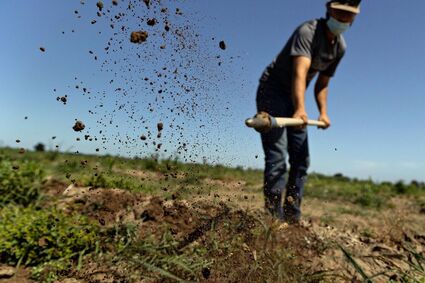Butterly Dreams
30,000 milkweeds planted around California in effort to save Western monarch butterfly
June 10, 2021

Carolyn Kaster, AP 2019
The population of migrating Western monarch butterflies has plummeted in California.
Article by Cara Duggan, SF Chronicle
The Western monarch butterfly is disappearing before our eyes. The number of graceful, black-and-orange winged insects overwintering in coastal California this year dropped to under 2,000, compared with more than 29,000 the year before. And that was already a fraction of its previous population.
While dire, the butterflies' dramatic decline has led to an urgent response: a $1 million state-funded project to rebuild habitat for Western monarchs on over 600 acres in eight locations in a variety of ecosystems. Organizers say it's the largest coordinated effort to save the Western monarch, which spends winters in coastal California, migrates to Central California to breed and then can travel as far as Idaho and Washington and back.
Working with other conservation groups and the California Department of Fish and Wildlife, the organization River Partners is planting more than 30,000 native milkweed plants - the only vegetation monarch adults lay their eggs on and that their caterpillars eat - to give the butterflies new spots to breed and fuel up for migration.

Plantings have taken place in Northern California along the Sacramento and Feather rivers, as well as along Interstate 80 near Davis and along the Kern River outside Bakersfield. This month, workers planted 12,000 milkweed plants at Dos Rios Ranch, a floodplain restoration site in Modesto, and around 450 at Hollenbeck Canyon Wildlife Area east of San Diego. The final planting will occur this fall in Oroville.
"We're taking the deliberative approach to make sure the species does persist," said restoration biologist Francis Ulep of River Partners, while working in a restored riparian corridor surrounded by arid hills covered with chaparral and coastal sage scrub at Hollenbeck Canyon. "There couldn't be a more critical time to be doing this," he said, tucking a tiny milkweed plant in the soil under a drip irrigation line.
It's difficult to imagine California without monarchs. The charismatic butterfly's arrival in Pacific Grove every fall is a part of the state's identity, though this year, the famed monarch sanctuary didn't see a single one.
Scientists believe the population drop of 99% since the 1980s is mostly because of a loss of milkweed habitat to agriculture and development, as well as pesticide exposure. A 2020 study by the Xerces Society for Invertebrate Conservation and the University of Nevada found residue of pesticides that can be harmful to monarchs on each of more than 200 milkweed plants collected from 19 sites across Central California.
Western monarchs usually overwinter on the California coast from October to March, then travel inland to breed, resulting in four to five generations each year. The first generations only live about a month, but subsequent generations usually live six to seven months and travel farther east and north before returning to the coast to start again.
“They’ve had a long winter. They’re burning up those reserves. It’s really important for them to have milkweed,” said endangered species conservation biologist Angela Laws of the Xerces Society, a partner in the planting project.

It was challenging getting access to 30,000 native milkweed plugs, which River Partners asked local nurseries to grow, sometimes after collecting seeds from wild plants. The project focused on three types of milkweed, a wildflower named for the milky substance it gives off when its stem is broken: showy milkweed, which is native to Central and Northern California and has fuzzy purple and pink flowers; narrowleaf milkweed, which has small pink and white flowers and can be found in most of the state, and a more spindly desert milkweed found in the south.
“We think milkweed used to be abundant in the Central Valley,” said Cheryl Schultz, biology professor at Washington State University who provided research to the project, noting it was once common enough to be used as a rope fiber by Native Americans.

Monarchs require other flowering plants for food, such as common tidytips, stinging nettle and Lacy phacelia that River Partners is planting along with milkweed, which will also help create habitat for other pollinators, including bees.
Before planting started, Laws canvassed each site for signs of pollinators so the team could compare conditions after planting.
She will return to each site three times this summer and three more times next year to look for monarch eggs, caterpillars and adults, along with other pollinator activity. That will help determine which planting locations and combination of plants were most successful.

Carolyn Kaster, AP 2019
Ferrara selects milkweed. Western monarchs overwintering in coastal California dropped under 2,000 this year
“We didn’t see any monarchs in our initial monitoring,” she said. “It’s really shocking.”
Western monarchs are on the state’s list of Invertebrates of Conservation Priority. In 2020 the federal government classified Western monarchs as “warranted but precluded” for endangered species protection, meaning other species have higher priority. The federal 2020 Monarch Act aims to protect the invertebrate further by authorizing $125 million in funding for conservation.









Reader Comments(0)